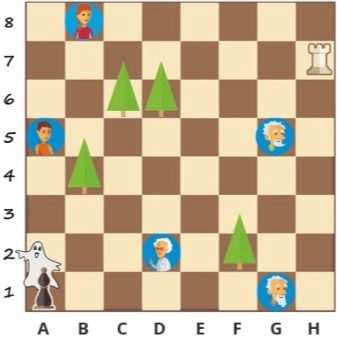Every person faces many problems every day that require a quick and effective solution. To cope with tasks of any complexity and at the same time to avoid a lot of mistakes helps formed systemic thinking.
What it is?
The concept itself appeared in the second half of the twentieth century.. By this time, the world had become much more complicated, and the use of logical thinking was not enough for the effective implementation of the multifaceted tasks set for humanity by modern multidimensional reality. There was a need for the involvement of a more complex type of thought process. Systemic thinking It enables a person to evaluate any event holistically, to observe and apply all the interconnections and interdependencies of actions and phenomena of the real world.
The human brain is able to perceive any object as part of a system. In addition, he can decompose the entire system into separate structural parts. People can predict their occurrence, development and destruction. This means that the person knows how to think systematically.
The essence of the concept can be stated in simple words. Any object belongs to any system. All its parts are ordered and interconnected so that the whole process goes in the right direction to achieve a single goal. Consistency allows each individual particle to possess all the attributes of a holistic system.

For example, a person is a complex creation, consisting of many separate elements. The structure of the human body consists of the cardiovascular, digestive, respiratory, musculoskeletal, reproductive, integumentary, excretory, and immune systems.In other words, all human organs are united into specific systems. Man can exist only with their simultaneous functioning.
All individual elements are united by complex, multifaceted ties into a single whole. Any failure in one of the systems leads to changes in its other parts. It is important to understand that the human body is a holistic system. With a disease of one of the organs, treatment should be carried out comprehensively, taking into account all systemic connections. Thus, each system contains many subsystems that are split into smaller parts. Any, even the most insignificant element affects the state of the system as a whole.
But a holistic object is a part of a larger structural formation. A person acts as a member of the family. A cell of society refers to some ethnic group belonging to a particular state. It, in turn, is part of humanity, which is a piece of the living nature of the earth. The globe is an element of the universe. In addition, any person can be a member of some work or sports team, community in social networks, clubs.

Systemic thinking is based on the ability of the brain to objectively evaluate existing reality.. Diagnosing a patient with a doctor or thinking a specialist on a car’s device, determining a breakdown in it is associated with a direct review of the form and internal structure of local systems. In other words, making decisions based on what you see with your eyes refers to local level. The mental coverage of the economic model and the ability to reproduce its image expand consciousness to global level.
Managing all the processes taking place with a person requires the use of systemic thinking. It is often compared with a logical thought process, involving the analysis and synthesis of mental operations. But the principle of a certain algorithm is not always effective in solving difficult life problems. It does not allow you to look at the problem from different angles, to see all its internal and external relations. Solving a problem through logical analysis without the use of systemic mental activity can lead a person to error.

An example is land reclamation, which was carried out everywhere in Soviet times. Logical reasoning allowed people to conclude that liquefied and unpleasantly smelling tracts of land are not needed. It was decided to drain the wetlands in order to obtain additional areas equipped with fertile soil. The disappearance of the swamps was supposed to destroy the flocks of mosquitoes, snakes, rid of high humidity.
From a logical point of view, the process was to benefit humanity. But it turned out that swampy areas fed small rivulets and streams. After their destruction, large rivers were shallowed, the number of springs decreased, the yield decreased, water meadows, on which animals grazed, disappeared. Logical thinking did not allow for the multifaceted interconnection of the ecosystem. As a result of land reclamation, some species of insects, animals, and plants became extinct.
Any system is a holistic and indivisible entity, the individual parts of which interact with each other in different ways. The functioning of the entire system does not depend on the elements, but on the way they interact. Sometimes they can be contradictory and paradoxical, but systemic thinking allows you to see and take into account all the nuances of the interaction of system elements.
The principles of the system of thought process are reduced to openness, determination, multidimensionality, controllability and non-triviality.

What is it used for?
Systemic thinking necessary people involved in science, art, education, politics, business, management. It is used as a concrete and structured tool in the fields of engineering, physics, and logistics. The technology of distributed accounting gives new life to information systems in the field of software engineering. A systematic thinking approach helps mankind navigate in the tangled world of new and old ways of working. He identifies the best of the many practices of the enterprise and contributes to the effective development of the project.
Choosing the right management methods and introducing new technologies helps eliminate errors. Using systemic thinking, they solve various production, research and life problems. This type of mental activity is an important component for leaders, since a system-minded person has a number of properties:
- the ability to effectively manage any systems, including organizing the work of other people;
- flexibility of mind, readiness to develop and change their beliefs;
- the ability to switch from one object to another;
- the ability to discern the regularity of processes and feedback;
- the ability to competently build goals and find ways to achieve them;
- the possibility of perceiving the situation from various angles;
- the ability to evaluate events and information in a complex, that is, holistically;
- the ability to distinguish between the individual parts of the entire system, as well as objects located outside it;
- the art of creating models of real events, with which you can establish causal relationships and see various options for their development;
- the ability to predict and select the appropriate tactics of behavior in any given situation.
Systems approach used to create new technical and organizational systems, combining knowledge from different theoretical data. It makes it possible to correctly analyze the situation. A clear understanding of the structure of the world reduces the number of errors made. Systemic thinking is used in building personal relationships, helps the individual to realize what is happening around the event.
People with this type of mental activity rarely become victims of fraudsters and manipulators. They correctly analyze the distorted information provided by the media, as they can objectively evaluate the facts.
A person who knows how to think systemically is difficult to mislead.


Levels
People who are able to think systemically are at different levels of knowledge of such thinking. Some may notice only one sign from a large number of characteristics of the whole system. Others are able to see all the signs, but cannot reveal the interactions between them. The third is inherent in the ability to identify all the signs and find connections between them. Finally, there are people who have the highest level of systemic thought activity, who themselves can design signs and create their own system.
Systemic thinking is based on the methodology of scientific knowledge. From the point of view of cognitive activity, the thought process of any person can have some level of ability to think systemically.
Zero
Zero level incompetence is inherent. Typically, people with a zero level do not possess the skills of systemic thinking. They cannot analyze the situation and act intuitively. It is difficult for them to isolate the main points, assess the risk, and predict the consequences of events.
The most important circumstances of the situation they leave without due attention. Hasty, spontaneous decisions are made by such individuals very often. They Do not think about the consequences.

First
The initial level is characteristic of people who are able to discern factors influencing events, structure informational information, apply significant criteria and formulate logical conclusions. A systematic approach to the situation of such a person can be traced exclusively in those areas where a person is well oriented. Only in these areas is he able to establish causal relationships.
Second
People with this level are able to analyze a large number of different information, including complex and multifactorial phenomena. They can separate the main information from the secondary facts, see causal relationships. They analyze situations that go beyond their professional competence well. They are characterized by variability of thinking, which allows you to develop several options for solving one problem. These individuals are able to catch the barrier that impedes the achievement of the goal, circumvent it or overcome obstacles in another way.
Third
A person with such a level of systemic thinking is capable of creating new concepts to find a solution to difficult practical problems. The individual is inherent in the ability to effectively complete the missing links in the system. He is able to draw the right conclusion based on partial or conflicting information.

How to develop?
A person who does not have this kind of mental activity at all can learn to think systematically. And people with the innate abilities of a systematic perception of reality have the opportunity to develop them, giving them awareness and organization.
The formation of a systemic thought process is closely related to cognitive functions. It involves careful and detailed observation of the surrounding world, penetration into the deep essence of objects and phenomena, the perception of all the smallest details and nuances. The functioning of a particular system, the course of any processes within it, as well as the consequences, enable the individual to study the operation of the entire mechanism and learn how to solve problems with the help of acquired knowledge.
Expanding one’s own horizons and developing diverse interests helps a person to develop the ability to think systematically and harmoniously. It is necessary to get rid of stereotypes that have formed throughout life. In an unusual situation, they prevent you from making the right decision. Equally important is the development of memory. It is aimed at memorizing the acquired knowledge with their analysis and systematization.
With a systematic approach, all types of memorization are actively working.: auditory, visual, olfactory, tactile, motor, sensory, emotional memory. You need to pay great attention to the ability to concentrate. It develops the ability to quickly switch attention from one object to another.
This ability enables a person to work on several projects at once, while keeping various tasks in mind.

Train systemic thought process in adults, by creating situations of uncertainty. A person is offered to find an effective solution by creating a model of the problem and its solution. Inventing situations of uncertainty and finding ways to resolve teach the thought process to system. The acquired skill is often used in life. Not every event has one hundred percent certainty; life circumstances sometimes change unexpectedly. This requires an appropriate way to solve the problem.
It is very difficult to build a baby’s competence in the field of systemic thinking. A systematic approach to the perception of the world around children can be developed by expanding their mental beliefs. It is important to teach children to filter incoming information so that they can highlight important information and discard unnecessary, secondary facts. To learn design, you need to create situations that children need to think through.
It is very important to develop the ability of vision feedback. The kid must learn to predict both the instantaneous consequences of decisions made and their long-term prospects.It is necessary to create various situations that require searching for different paths.
The most effective method for developing systemic thinking is to solve creative problems and puzzles.


Exercises
A systematic approach to completing assignments is not limited to the rigid framework of standards. It is good to conduct group games with the presence of a competitive moment. For the development of a systemic thought process, it is recommended to choose absolutely any object and divide the exercise into 2 stages.
- The selected concept must be written on a piece of paper. Then it is necessary to write out in two columns the various subsystems included in the structure of this object. For example, in the center of the sheet, the word “cake” is fixed. To his right there are such concepts as “beautiful”, “round”, “candles”, “tasty”, “sweetness”, “dainty”, “dessert”, “cut”, “piece”, “layer”, “tier” "," Filling ". To the left of the word “cake” are written the words “flour”, “dough”, “cream”, “cream”, “condensed milk”, “honey”, “fruit”, “butter”, “cake”, “souffle”, “confiture ”,“ Strawberries ”,“ raspberries ”,“ nuts ”,“ icing sugar ”,“ soda ”,“ yeast ”.
- You need to define a larger system, which includes this concept, of which it is a part. It can be a birthday, anniversary, wedding, banquet, celebration, celebration, tea party, culinary department, pastry shop.
There are many children's games aimed at developing systemic thinking. Children are invited to compose a hierarchy of parts of the system, to name the whole subject on the basis of its parts, to continue to reduce or increase to the limit, to find the general, to single out the main thing. For example, a game in which children must share ten thoughts with an alien flying to Earth helps to form the skill of separating the main property from secondary signs.
The next task comes down to the fact that the baby is pondering what main parts the various objects consist of (car, washing machine, bed, pram, pan), how they are related. Without which ingredients it is impossible to cook soup, and which components are optional.
Any rebuses, arithmetic puzzles, chess tasks develop a child’s systemic thinking. For example, a simple task for beginning chess players comes down to the fact that the elephant dressed up as a ghost in order to scare his friends. His task is to go around the trees without jumping over them. You can not stand on the cells where the boat can knock him down. To intimidate the character, he must get on the cell with his image. How many moves does an elephant need to make in order to quickly frighten all the heroes?
Never solve problems for the baby, better help him with leading questions. Do not force the child to complete tasks by force. Praise him even with little success.












